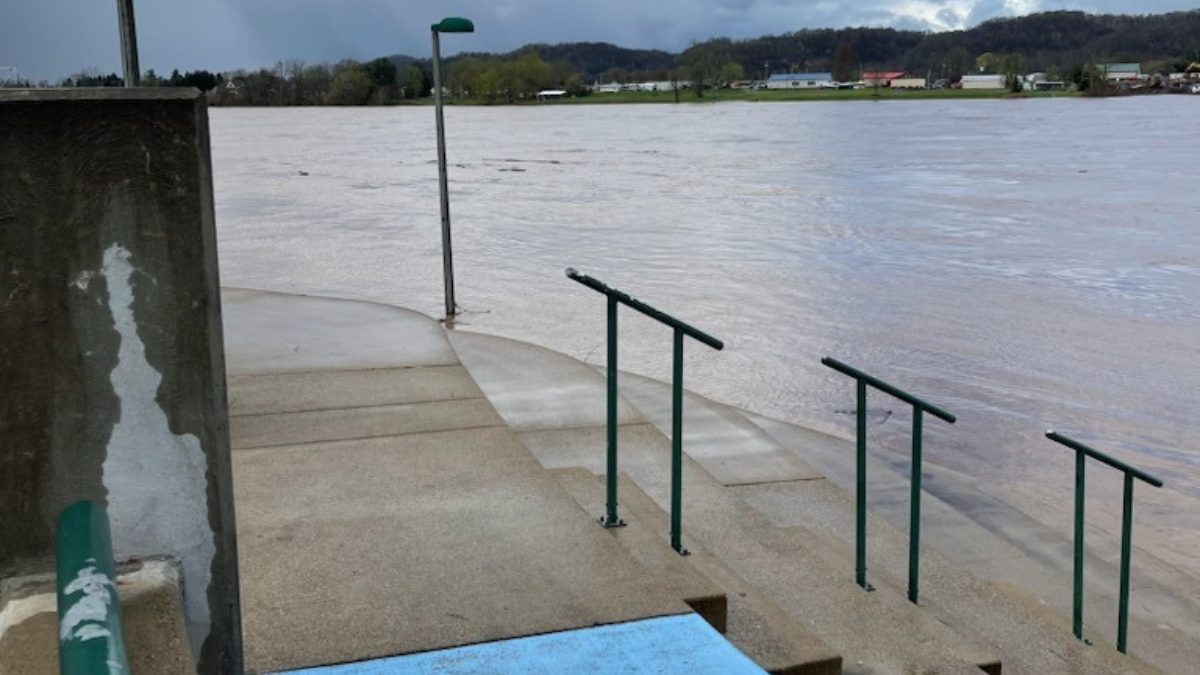Flood warnings continued on Thursday for West Virginia communities along the Ohio River. Two counties are hoping for the best, but bracing for the worst.
In Mason County, rising backwaters from the Ohio River are forcing several road closures. Jeremy Bryant, Mason County’s director of Homeland Security and Emergency Management, said all county schools are closed for the rest of the week. He said in Point Pleasant, it takes about a 50-foot Ohio River flood stage to activate flood wall gating and pumping.
“We’re right now sitting at 45 feet at Point Pleasant and just keeping an eye on the prediction,” Bryant said. “If it would rise any at all, then they’re probably going to have to activate and start looking and putting the flood walls in.”
Bryant said the Ohio River crest is not expected until Saturday. He said the county continues to monitor river levels, communicate with residents and make flood preparations, including possible evacuations.
“There will be places that are shut off, but it’s more of a shut off thing rather than an imminent danger thing,” Bryant said. “We’re making sure that people are aware and let them make their own decisions at this point. If it comes to an evacuation, we’ll deal with it at that time.”
In the Parkersburg area, Wood County 911 Emergency Service Deputy Director Dale McEwuen said some roadways are obstructed and the Red Cross is on standby.
“The U.S. Army Corps of Engineers is doing a real good job of controlling the flow of the water,” McEwuen said. “That helps with the flooding purposes. And right now we don’t have any folks displaced from their homes.”
He said they are issuing constant social media alerts as Ohio River water inches toward downtown Parkersburg.
“Our flood wall in Parkersburg is down at the point,” McEwuen said.“It’s called Point Park. It has been closed and there’s water up to it. That prevents water from coming into our downtown area.”
Both counties have first responders on standby as they closely watch the rising river waters. McEwuen said it’s all about watching the numbers now.
“We’re expecting the water to start receding on Sunday,” McEwuen said. “It’s still going to climb probably another two feet between now and then. It will crest at about 41 feet on Sunday and should start receding after that.”
